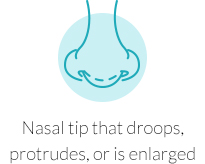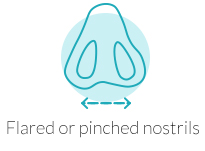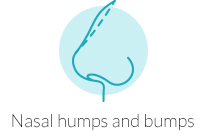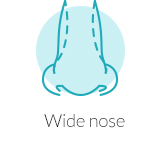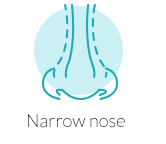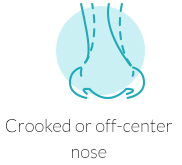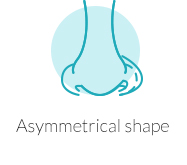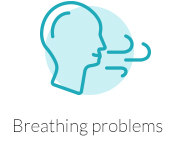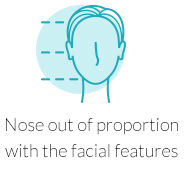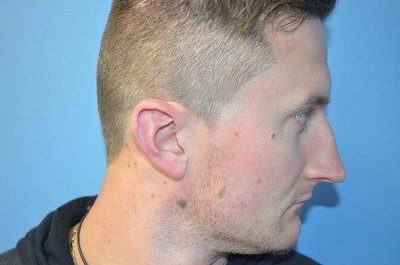![]() Rhinoplasty, also called nose surgery, is a procedure designed to change the appearance (and sometimes improve the function) of the nose. Dr Vlad Milovic, our specialist plastic surgeon, uses the latest rhinoplasty techniques and can help you determine if rhinoplasty is right for you.
Rhinoplasty, also called nose surgery, is a procedure designed to change the appearance (and sometimes improve the function) of the nose. Dr Vlad Milovic, our specialist plastic surgeon, uses the latest rhinoplasty techniques and can help you determine if rhinoplasty is right for you.
Quick Facts about Rhinoplasty Procedures
- Anaesthesia: General anaesthesia
- Inpatient/Outpatient: Outpatient
- Potential Benefits: A more proportionate or flattering nose; reduction of unwanted aesthetic phenomena
- Potential Side Effects: Swelling, bruising; risks associated with all surgical procedures (see below)
- Recovery Time: Several weeks or months depending on techniques utilised
Risks of Surgery
All surgical procedures carry risks and the potential for complications. While Dr Milovic is extensively trained and experienced with a comprehensive array of plastic surgery procedures and utilises advanced techniques to help mitigate those risks, patients considering treatment should always be fully aware of them beforehand. Dr Milovic will go over all risks and potential complications associated with the procedure during the initial consultation, and we are happy to address any questions or concerns you may have.
Risks of this procedure include, but are not limited to:
- Infection
- Scarring
- Excessive bleeding
- Pain/discomfort
- Nerve damage
- Bruising
- Swelling
- Complications relating to anaesthesia
- Seroma (a growth/lump near the surgery site that may become infectious)
- Unsatisfactory cosmetic results
- Death
- Poor wound healing
- Potential for an additional surgery
- Blood clots
- Breathing difficulties
- Numbness or other skin sensation changes in the treatment area
- Septal perforation that may be correctable with an additional surgery or may be permanent
- Skin discolouration
- Asymmetrical results
What Nasal Concerns Can Rhinoplasty Address?
Rhinoplasty can help you address a number of cosmetic and/or functional concerns. Some of the common issues treated by rhinoplasty include:
Am I a Candidate for Rhinoplasty?
Rhinoplasty is a very personal decision, and you should have realistic goals and expectations before undergoing surgery. Generally, rhinoplasty is performed on patients older than 18 or when the nose has developed fully, and there is no upper age limit on the surgery. Dr Milovic will examine your nose during your initial consultation and discuss how rhinoplasty can achieve an improvement and meet your goals and expectations. If you are in good health and you are a non-smoker (or you are prepared to give up smoking for at least six weeks prior to and after surgery) you may be a suitable candidate for rhinoplasty.
Visualising Rhinoplasty Results with VECTRA®H2 3D Technology
After we take your pre-operative photos during your first consultation, Dr Milovic can utilise state-of-the-art VECTRA®H2 3D technology to create a digital simulation of your expected rhinoplasty results. Using this process, Dr Milovic will guide you through the simulation and discuss what he believes would be a realistic goal for your surgery. The VECTRA®H2 3D system uses precision optics to capture high-resolution photos of the face, which translate into a detailed 3D digital image that can be manipulated with innovative software. Dr Milovic can adjust the image to simulate a variety of surgical approaches and demonstrate the final results you can hope to achieve.
While many curious patients sometimes use an app on their phone to create the look they want to achieve, Dr Milovic prefers to employ the powerful VECTRA®H2 3D imaging technology together with patients to establish the most realistic expectations for surgery. Dr Milovic’s expertise in knowing what results can and cannot be achieved surgically is an important key to revealing an accurate 3D rhinoplasty visualisation.
Open Rhinoplasty vs. Closed Rhinoplasty
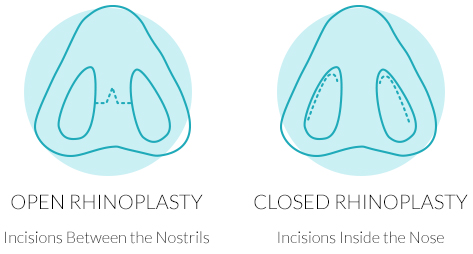 There are two techniques or options which may be considered: the closed technique or the open technique. Both will involve incisions inside of the nose, where most people will never see them again. With open rhinoplasty, however, a second incision is often necessary between the nostrils to access all the interior structures. The appropriate technique for your anatomical needs and desired outcome will be determined at your initial consultation.
There are two techniques or options which may be considered: the closed technique or the open technique. Both will involve incisions inside of the nose, where most people will never see them again. With open rhinoplasty, however, a second incision is often necessary between the nostrils to access all the interior structures. The appropriate technique for your anatomical needs and desired outcome will be determined at your initial consultation.
Ultrasonic Rhinoplasty
Dr Milovic also performs ultrasonic rhinoplasty, a technique he brought to Australia from Europe. This procedure is often referred to as Piezo rhinoplasty because the nasal bones are finely sculpted (rather than broken) using a specialised surgical tool called a Piezoelectric wand. This ultrasonic instrument is designed to minimise trauma during bone reshaping and deliver refined results. Following ultrasonic rhinoplasty, patients generally experience less swelling and bruising for an easier recovery. Not all rhinoplasty patients are good candidates for this approach, as certain aesthetic changes to the nose may not be possible with this technology. To find out if you can benefit from this technique, it is important to undergo an evaluation with Dr Milovic and discuss your options. Learn more about ultrasonic rhinoplasty.
Ethnic Rhinoplasty
When Dr Milovic assesses you for the rhinoplasty procedure, he will take your ethnicity into consideration. Dr Milovic does not use the same surgical approach on every patient. Rather, your facial anatomy, ethnicity and aesthetic goals will be discussed during your pre-op consultations. You may want a “dramatic” difference without close attention to keeping your “ethnic” nose, or you may be the type of patient who wants a subtle refinement without loss of your ethnic traits. Your needs and goals will guide the development of your program.
Dr Milovic advocates a natural approach. He will discuss your cosmetic goals and wishes with you to help create the look you want.
What Can I Expect During the Rhinoplasty Procedure?
Depending upon your general health and the extent of the procedure, rhinoplasty surgery is typically performed as a day procedure, or alternatively (as needed) with an overnight hospital stay. Under normal circumstances nose surgery takes one to two hours. Dr Milovic will only perform your rhinoplasty surgery in safe, accredited operating facilities. You can read more here.
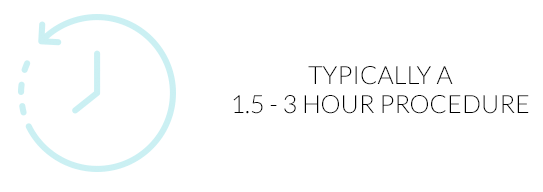
What Is Recovery from Rhinoplasty Like?
Some rhinoplasties have breathable internal splints with external splints which will be placed in the nose during the surgical procedure and will generally be removed within 7-10 days post-surgery. The bandaging and splint will be removed within about 10 days. Your face will be swollen and bruised for at least 10 days after surgery, and Dr Milovic may also recommend mild pain medication. Cold compresses will also help to minimise the swelling and bruising.
Recovery time will vary from patient to patient, but you should expect to take off at least two weeks from your normal activities, including work, and it may be several weeks before you can resume any strenuous exercise. You will be given post-surgery instructions to follow and if you have any questions, please speak to Dr Milovic.
How Long Do Rhinoplasty Results Last?
Rhinoplasty results are generally long-lasting, as the changes made to the bone and cartilage are permanent. As such, the new shape of your nose should remain in place over time, especially if you closely follow your aftercare instructions for a safe and stable recovery. It is also important to note that results should become more noticeable as swelling subsides.
Additional Frequently Asked Questions About Rhinoplasty
Below, Dr Milovic has answered some of the most commonly asked questions we hear regarding rhinoplasty. If you would like to know more, please contact our practice.
Can rhinoplasty help with a deviated septum?
While rhinoplasty is generally performed for aesthetic purposes, the procedure can also address breathing problems, namely a deviated septum. This relatively common issue refers to a nasal septum (or thin wall of cartilage and bone) that is displaced to one side, causing complications with breathing, congestion and otherwise. If you are suffering from a deviated septum or similar concern, Dr Milovic can tailor your treatment to address your individual needs.
Do rhinoplasty results differ between males and females?
A patient’s gender identity can play a role in their ideal rhinoplasty effects. For instance, a male may desire a more pronounced nasal bridge, whereas females often want a softer and more delicate aesthetic. With this in mind, Dr Milovic understands that each patient will have unique goals for their rhinoplasty, and he will plan the surgery according to your preferences.
Can I see what my rhinoplasty will look like before I agree to surgery?
Dr Milovic can use the VECTRA®H2 3D imaging system to create a 3D simulation of your surgery and a detailed model of your potential rhinoplasty results. If you are curious to see what rhinoplasty can do to improve your nose, facial appearance and profile, we welcome you to schedule an appointment with Dr Milovic.
Will I need anaesthesia?
Rhinoplasty is generally performed as a day (outpatient) procedure under general anaesthesia. Dr Milovic engages the services of a qualified anaesthetist who is a Fellow of the Royal Australian and NZ College of Anaesthetists (ANZCA) to perform your sedation or general anaesthesia.
For your safety, Dr Milovic and/or your anaesthetist will ask you about all the medications you are taking or have taken, and any allergies you may have. Please be sure to provide an up-to-date list.
Will I have a scar after rhinoplasty?
If you have an open rhinoplasty surgery, a small incision is made on the underside of the nose on the piece of flesh that separates the nostrils (this is called the columella). Once healed, this scar is inconspicuous on most patients, and few of them report noticing it or having family or friends who observe the mark. For closed rhinoplasty procedures, the incisions are all internal, and therefore virtually invisible.
How can I reduce swelling after rhinoplasty?
Cold compresses are recommended for reducing swelling, and we also suggest keeping your head elevated when sleeping or lying down. This can be achieved by layering a few extra pillows or other soft cushions.
When can I blow my nose after rhinoplasty?
With the packing and swelling, it’s normal to feel a bit “stuffed up” in your nose, but you should resist blowing your nose for at least two weeks, potentially as many as four, to ensure excellent healing. The better your recovery, the better your results, so call if you have any questions about guidelines during healing.
How long after rhinoplasty until I can wear glasses?
The answer to this will depend on the type of rhinoplasty you had and what was changed. As long as the splint is in place, wearing glasses should be fine. If your bridge was altered, once the splint is removed you may have to refrain from wearing glasses for up to four weeks. Dr Milovic will provide you with details based on your treatment.
How do I clean my nose after rhinoplasty?
Applying antibacterial ointment can help loosen blood clots while preventing infection, and if this is warranted, we will explain how to use it. If your packing has been removed, you can use a cotton swab dipped in hydrogen peroxide or saline solution to very gently soften blood clots and hardened mucus near the nostril opening (don’t insert the swab deeply). Our medical team will give you detailed instructions on how to do this properly without causing damage, and you can always call us for more help.
Considering rhinoplasty? Let’s talk about how nose surgery may be able to help you achieve your goals and bring your facial features into better proportion. Call us today to schedule a consultation.
